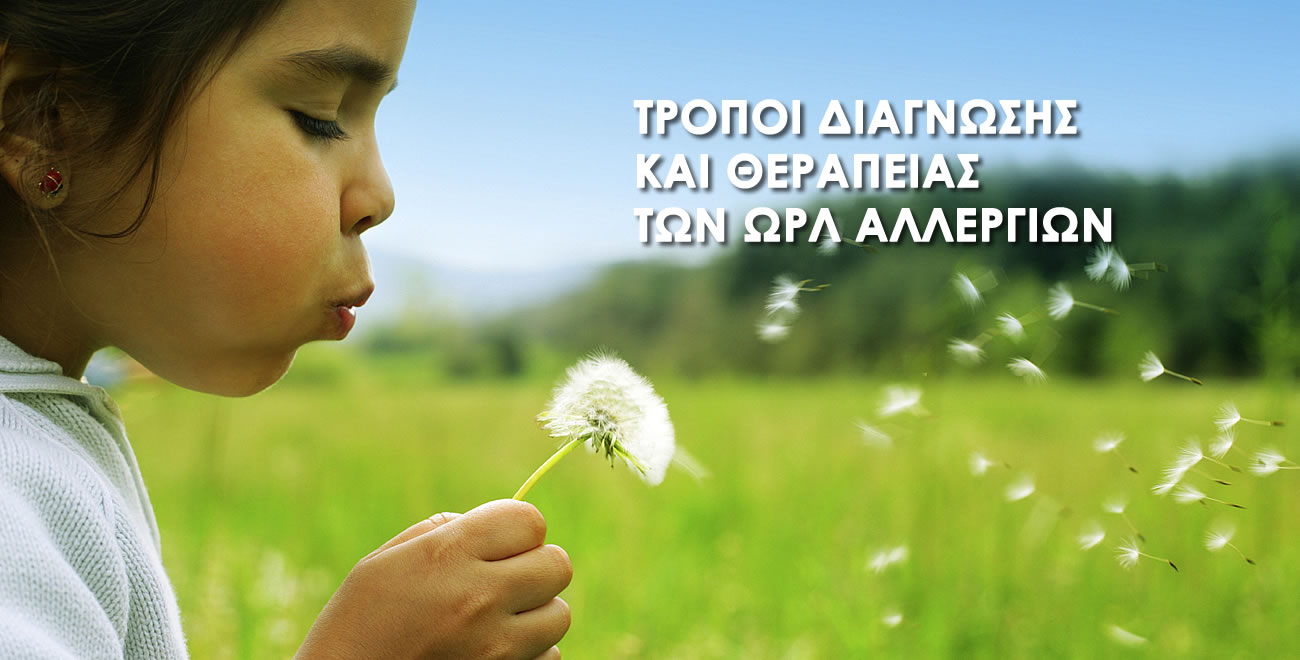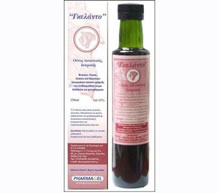
Λεξικό .. Allergic rhinitis
Allergic rhinitis
Allergy rhinitis is typically classified as seasonal allergy rhinitis (SAR) and perennial allergy rhinitis (PAR). More recently, the Allergic Rhinitis and its Impact on Asthma document proposed the intermittent (ITR) and persistent forms (PER). However, it has been previously reported that each single allergen may induce different clinical and pathophysiologic features. Allergic rhinitis is characterized by a symptom complex with seasonal or perennial sneezing or intermittent or persisatent itching, rhinorrhea, nasal congestion, and often conjunctivitis and rhinopharyngitis on exposure to airborne antigens to which the patient had prior exposure and developed specific IgE. Seasonal allergic rhinitis presents peak symptomatology at the pollination season of each place and is generally induced by wind-borne pollens, airborne fungus spores. Perennial allergic rhinitis is induced by animal danders, house dust mite (Dermatophagoides pteronyssinus and farinae), molds, pollens in certain subtropical climates.
Patients with pollen allergy show significantly more severe symptoms, lower nasal airflow, and higher response to decongestion test than patients with allergy to perennial allergens (P < .0001). Patients with PER may show different pathophysiologic patterns depending on the type of causal allergen [1]. If diagnosis is confirmed by the above physical findings, skin tests, treatment can be instituted. Otherwise, further examinations and in vitro tests (total and specific IgE levels, etc.) are indicated. Treatment by avoidance of the allergen, antihistamines (systemic or intranasal), intranasal steroid spray are usually effective. The intractable cases may require a short course of systemic corticosteroid treatment. Cromolyn sodium may prevent the progression of symptoms. Desensitization is the radiocal treatment of choice with sublingual or subcutaneous allergen immunotherapy [2].
Linneberg et al (2002) in their investigation support the concept that allergic rhinitis and allergic asthma are manifestations of one disease entity[3]. This concept and its clinical implications have recently been the subject of an exhaustive review (Bousquet et al, 2001) [4]. Thus, physicians should be aware that patients with allergic rhinitis often experience asthmatic symptoms, that they are at increased risk of developing allergic asthma, and that a diagnosis of allergic rhinitis should be considered in all patients with allergic asthma. These patients may benefit from treatment of their allergic rhinitis that may improve coexisting asthma or reduce the risk of developing asthma. Allergic rhinitis causes fatigue, poor health perception, compromised social function, learning impairment, anxiety, family dysfunction, and sleep disturbance [5, 6].
References
1. Ciprandi G, Cirillo I, Pistorio A. Persistent allergic rhinitis includes different pathophysiologic types. Laryngoscope. 2008 Mar;118(3):385-8
2. Rogala B, Markiewicz-Bendkowska IB, Brzoza Z, Glück J, Oleś E. Side-effects of injective allergen immunotherapy administered to intermittent or persistent allergic rhinitis patients. Rhinology. 2007 Jun;45(2):134-9.
3. Linneberg A, Henrik Nielsen N, Frølund L, Madsen F, Dirksen A, Jørgensen T; Copenhagen Allergy Study. The link between allergic rhinitis and allergic asthma: a prospective population-based study. The Copenhagen Allergy Study. Comment in:Allergy. 2002 Nov;57(11):969-71. Allergy. 2002 Nov;57(11):1048-52 .
4. Bousquet J, Van Cauwenberge P, Khaltaev N. Allergic rhinitis and its impact on asthma. J Allergy Clin Immunol, 2001:108:147-334.
5. Meltzer EO. Quality of life in adults and children with allergic rhinitis. J Allergy Clin Immunol 2001;108(Suppl. 1):S45-S53.
6. Van Cauwenberge P, Bachert C, Passalacqua G et al. Consensus statement on the treatment of allergic rhinitis. European Academy of Allergology and Clinical Immunology. Allergy 2000;55: 116-134.
Γκέλης Ν.Δ. - Λεξικό Αλλεργίας - Εκδόσεις ΒΕΛΛΕΡOΦΟΝΤΗΣ - Κόρινθος 2013
Gelis Ν.D. - Dictionary of Allergies - VELLEROFONTIS Publications - Corinth 2013




